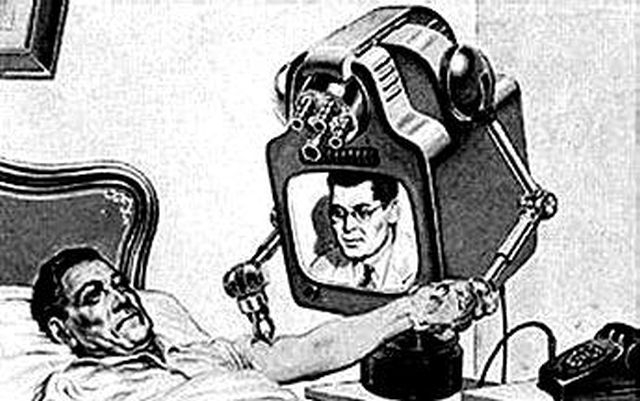Teledoctors: Inexpensive and Obtainable Healthcare Solutions
Teledoctors: Inexpensive and Obtainable Healthcare Solutions
Blog Article
Teledoctors: Connecting the Gap In Between Individuals and Health Care Carriers
The appearance of teledoctors represents a significant change in the medical care landscape, supplying services to long-lasting access problems faced by carriers and clients alike. By incorporating telemedicine into conventional methods, health care systems can reach remote and underserved populations, supplying crucial medical consultations without the obstacles of range and traveling. This paradigm shift not only boosts individual engagement however also optimizes source allotment for companies. Nonetheless, the extensive fostering of teledoctors raises important inquiries about the sustainability of such practices and the effects for future medical care distribution. What obstacles exist ahead in ensuring this model's performance and equity?
Increase of Telemedicine

The surge of telemedicine is likewise fueled by the demand for cost-effective healthcare. Medical care systems worldwide are under pressure to reduce expenses while preserving quality treatment, and telemedicine offers a viable remedy. By minimizing the need for physical brows through, telemedicine minimizes above expenses for health care centers and inevitably lowers the financial worry on clients.
Additionally, the COVID-19 pandemic worked as a driver, speeding up the fostering of telemedicine techniques. Social distancing procedures and the demand to lessen direct exposure risk demanded a shift in the direction of remote appointments, motivating governing bodies to adapt and sustain telehealth solutions. This change has not just tested telemedicine's efficiency but also its potential to progress as a staple element of contemporary medical care systems.
Advantages for People
Mainly, telemedicine boosts access, enabling clients in remote or underserved locations to get in touch with medical care providers without the requirement for considerable travel. Telemedicine likewise supplies people the comfort of receiving medical guidance and therapy from the convenience of their homes, lowering the time and cost associated with taking a trip to a health care center.
Moreover, telemedicine sustains connection of care by helping with normal follow-ups and surveillance, which are essential for handling persistent conditions. People can quickly arrange appointments and access health care services outside conventional office hours, fitting their busy way of livings. This flexibility results in improved patient engagement and adherence to therapy strategies, possibly resulting in better health and wellness results.
Additionally, telemedicine can help mitigate the danger of infection transmission, a problem enhanced by the COVID-19 pandemic. By minimizing the need for in-person gos to, clients can stay clear of congested waiting spaces and lower direct exposure to contagious ailments. Eventually, telemedicine equips individuals by offering timely, efficient, and customized medical care services.
Benefits for Providers
For doctor, telemedicine uses considerable benefits that improve the performance and reach of their practice. By leveraging digital technology, providers can prolong their services to a broader market, including those in underserved or remote areas. This not only relieves geographical barriers yet likewise enhances client retention and acquisition by making healthcare extra available.
With telemedicine, the requirement for physical space decreases, permitting carriers to conserve on real weblink estate and operational expenditures. This adaptability can lead to enhanced person appointments per day, thus improving profits capacity.
Telemedicine additionally promotes a much more collective setting for healthcare service providers. teledoctors. It allows smooth sharing of individual details amongst professionals, boosting diagnostic accuracy and treatment end results. In addition, electronic systems can integrate with electronic wellness records (EHRs), boosting data accuracy and streamlining administrative tasks
In addition, telemedicine enhances individual satisfaction, which is important for company online reputation and success. By providing timely and convenient care, suppliers can enhance patient commitment and interaction, better enhancing the provider-patient partnership.
Overcoming Difficulties
While telemedicine offers various benefits for medical care providers, it additionally presents difficulties that require careful consideration. One substantial obstacle is guaranteeing information privacy and safety pop over to these guys and security. As client information is transferred electronically, the threat of information violations increases, necessitating robust cybersecurity procedures. Medical care suppliers have to abide by rigid laws like HIPAA to shield delicate information, thus calling for financial investment in protected platforms and ongoing personnel training.
An additional difficulty is the digital divide, which can impede accessibility to telemedicine services. Not all patients have equal accessibility to the needed modern technology or internet connectivity, specifically those in underserved or rural locations. This variation can intensify existing medical care inequalities, making it essential for companies to check out alternate solutions, such as partnerships with community companies, to connect this space.
In addition, there are here are the findings limitations in carrying out physical exams remotely. Specific problems require in-person assessment, highlighting the need for a crossbreed version that integrates telemedicine with standard sees. Service providers must navigate these challenges by creating procedures to recognize when telemedicine is suitable and making sure seamless transitions between in-person and virtual care.
Future of Medical Care
The future of medical care is positioned for a transformative evolution, driven by the quick combination of technology and technology. Central to this change is the rise of telemedicine, which is redefining just how medical services are accessed and delivered. With innovations in digital interaction, telehealth platforms are ending up being more innovative, supplying real-time assessments, remote individual surveillance, and individualized care plans. This not only enhances individual ease yet also expands access to medical care, specifically in underserved and rural areas.
Expert system (AI) and device knowing are additionally established to play critical duties. These innovations can examine large quantities of information, offering anticipating understandings right into individual health, enhancing analysis precision, and customizing treatment plans. AI-driven devices can increase doctor' abilities, resulting in even more educated decision-making and far better individual results.
Moreover, wearable modern technology and Net of Clinical Points (IoMT) devices are transforming person interaction and positive health and wellness management. These devices make it possible for constant health and wellness monitoring, enabling very early detection of potential concerns and prompt interventions.
As these innovations continue to advance, they guarantee to create a more efficient, accessible, and patient-centric medical care system, eventually bridging the gap between people and medical care carriers. - teledoctors
Verdict
Teledoctors are transforming health care by considerably boosting availability and performance through remote appointments. This advancement supports patients in underserved areas by giving prompt clinical guidance without calling for physical gos to, thus improving patient engagement and connection of treatment. Medical care suppliers benefit from a lot more efficient time management and enhanced collaboration chances. In spite of difficulties such as technical barriers and regulative concerns, the future of medical care shows up progressively inclusive and effective as a result of the integration of telemedicine right into traditional treatment designs.

As telemedicine proceeds to reshape health care distribution, patients stand to gain significantly from this improvement. Largely, telemedicine enhances accessibility, enabling patients in remote or underserved locations to seek advice from health care carriers without the requirement for considerable traveling. Telemedicine likewise supplies patients the comfort of receiving clinical suggestions and therapy from the comfort of their homes, minimizing the time and expense connected with traveling to a medical care center.
Eventually, telemedicine empowers individuals by supplying timely, effective, and personalized health care solutions.
Report this page